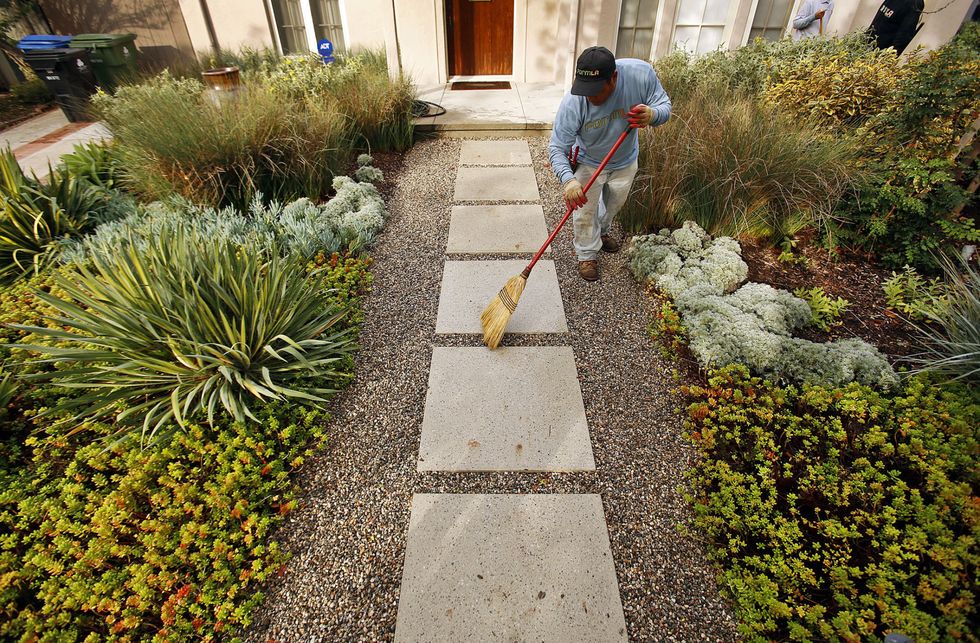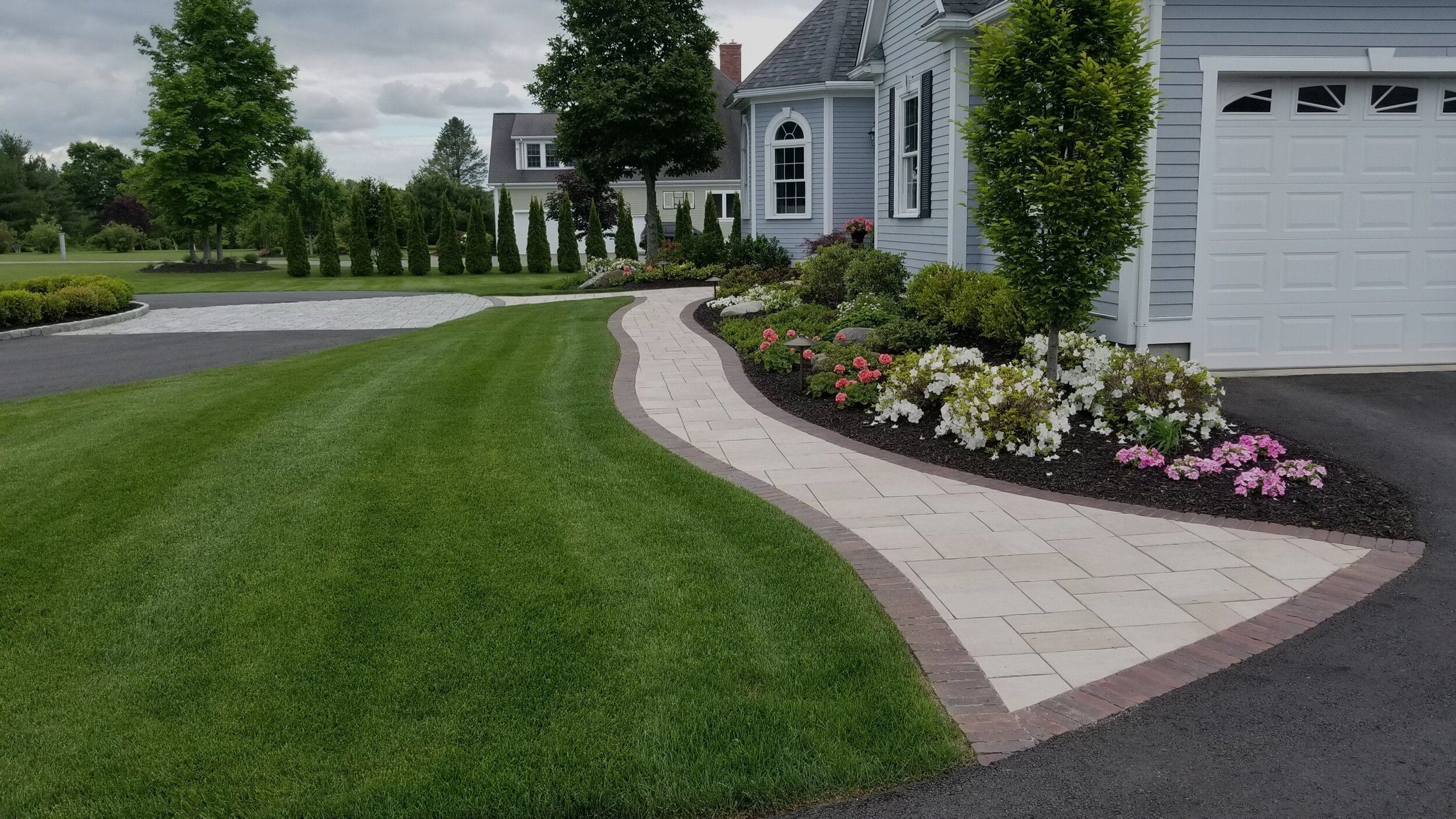Change Your Outdoor Space with Professional Palm Desert Landscaping Services
Change Your Outdoor Space with Professional Palm Desert Landscaping Services
Blog Article
A Comprehensive Guide to Designing and Implementing Effective Landscaping Solutions
The art and scientific research of landscape design expand past mere aesthetics; they entail a thoughtful assimilation of style concepts, ecological stewardship, and sensible application. What techniques can one use to guarantee these landscapes not just grow however likewise prosper in consistency with their surroundings?

Understanding Landscape Layout Principles
One may wonder what fundamental elements contribute to efficient landscape design. At its core, successful landscape layout hinges on a number of key concepts that guide the plan and choice of elements within a space. These principles include unity, equilibrium, percentage, and rhythm, each serving to develop an unified outdoor setting.
Unity describes the cohesive connection among various elements, guaranteeing that they interact cosmetically and functionally. Balance can be achieved via balanced or unbalanced plans, permitting the landscape to feel secure and inviting. Percentage involves recognizing the range of elements in relation to each other and the surrounding setting, advertising visual consistency and convenience.

Examining Your Outdoor Room
Before executing the concepts of landscape layout, a comprehensive evaluation of your outside space is crucial. This initial analysis assists define the extent of your landscaping task and makes certain that your style straightens with the special qualities of your building. Begin by examining the dimensions of your space, taking specific dimensions to comprehend the readily available location for numerous elements such as paths, yards, and outdoor patios.
Next, observe the existing functions of your landscape, including topography, soil quality, and drainage patterns. These elements considerably influence plant selection and placement. Furthermore, analyze the sunshine exposure across different locations throughout the day, as this will certainly impact the sorts of plants that prosper in your yard.
Take into consideration the microclimates created by structures, trees, and other barriers, as they can affect temperature and dampness degrees. Last but not least, keep in mind of any kind of existing plants or hardscape components that you want to remove or maintain. This detailed assessment prepares for a well-informed and effective landscaping option, ensuring that your style is not just aesthetically pleasing however also functional and lasting for years ahead.
Sustainable Landscaping Methods
Incorporating sustainable landscape design techniques is crucial for producing an eco liable outdoor space. These methods not just advertise environmental equilibrium but also improve the visual and useful worth of a landscape. One foundational method is the application of native plants, which call for less water and maintenance while sustaining local wild animals. Implementing efficient irrigation systems, such as drip watering, decreases water waste and guarantees that plants obtain ample dampness.

Another efficient strategy is the calculated placement of bushes and trees to give natural windbreaks and shade, therefore decreasing power costs (Palm Desert Landscaping). Rain gardens can be integrated right into the landscape design to manage stormwater runoff properly, filtering toxins prior to they get in rivers
Picking the Right Plants
Choosing the right plants for your landscape is essential to attaining both visual appeal and eco-friendly consistency. The procedure begins with an understanding of your neighborhood climate, soil conditions, and the certain microenvironments within your landscape. Assessing elements such as sunlight exposure, wetness levels, and existing vegetations will certainly help you select plants that grow in your unique setup.
Consider integrating indigenous plants, as they are well-adapted to neighborhood conditions, need less maintenance, and assistance local wildlife. In addition, selecting a varied selection of varieties can boost biodiversity while minimizing the danger of this hyperlink illness and insect outbreaks. It is vital to assess the growth practices, growing durations, and seasonal colors of possible plants to develop a natural and dynamic landscape.
Moreover, think of the intended use the area; for circumstances, if the location will certainly experience high foot website traffic, select durable ground covers. By thoughtfully picking plants that align with both your aesthetic objectives and environmental needs, you can create a sustainable landscape that not only boosts your residential property however also adds favorably to the surrounding community.

Application and Upkeep Techniques
As soon as the appropriate plants have actually been selected for your landscape, the focus moves to reliable execution and recurring maintenance methods. Successful installment begins with correct website preparation, that includes soil testing to identify nutrient degrees and pH, complied with by changing the dirt as needed. Meticulously arrange plants according to their development habits and light demands, ensuring ample spacing to advertise healthy and balanced growth.
Irrigation is an essential component of implementation. Establish a watering timetable that considers the details demands of each plant species, changing for seasonal adjustments. Using drip watering systems can enhance water efficiency and minimize overflow.
Maintenance approaches need to be executed to make sure the long life and vigor of your landscape. Routine jobs consist of weeding, mulching, and trimming to regulate growth and avoid disease. Fertilizing needs to be performed based on soil examinations, giving the needed nutrients without over-fertilizing.
Keeping an eye on for bugs and illness is vital; early detection can protect against considerable damage. Lastly, seasonal changes to maintenance routines, such as preparing and winterizing perennials for springtime growth, will certainly make sure that your landscape stays aesthetically attractive and healthy year-round.
Conclusion
Finally, reliable landscaping options require a complete understanding of layout concepts, precise analysis of exterior areas, and the application of lasting techniques. The choice of suitable plant browse around here species plays an essential duty in improving visual appeal and ecological durability - Palm Desert Landscaping. Successful application and ongoing maintenance further make certain the long life and vitality of landscapes. By incorporating these elements, landscapes can be changed right into beautiful, functional settings that promote biodiversity and contribute positively to community well-being.
One might wonder what foundational elements contribute to effective landscape design. At its core, successful landscape layout hinges on several essential principles that direct the plan and choice of aspects within a room.Selecting the right plants for your landscape is essential to achieving both aesthetic allure and eco-friendly consistency. It is necessary to evaluate the growth practices, blooming periods, and seasonal shades of possible plants to develop a dynamic and natural landscape.
As soon as the ideal plants have been chosen for your landscape, the emphasis shifts to reliable implementation and ongoing maintenance methods.
Report this page